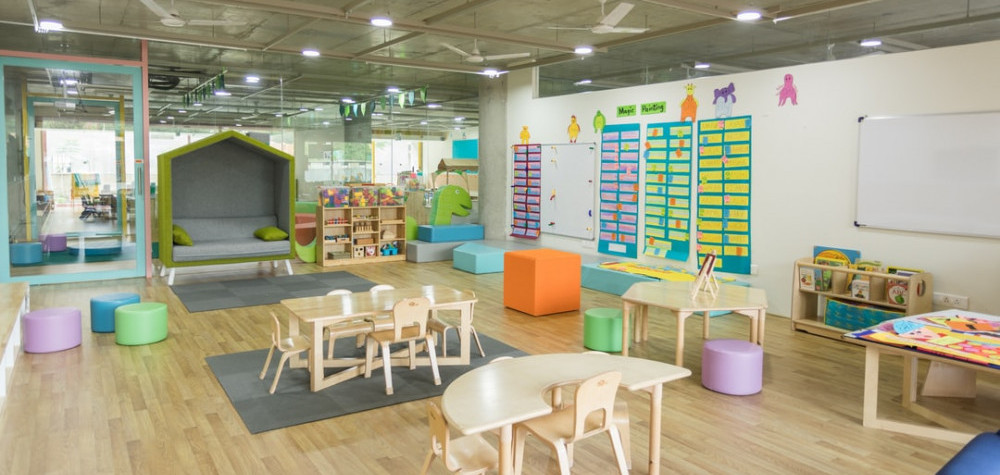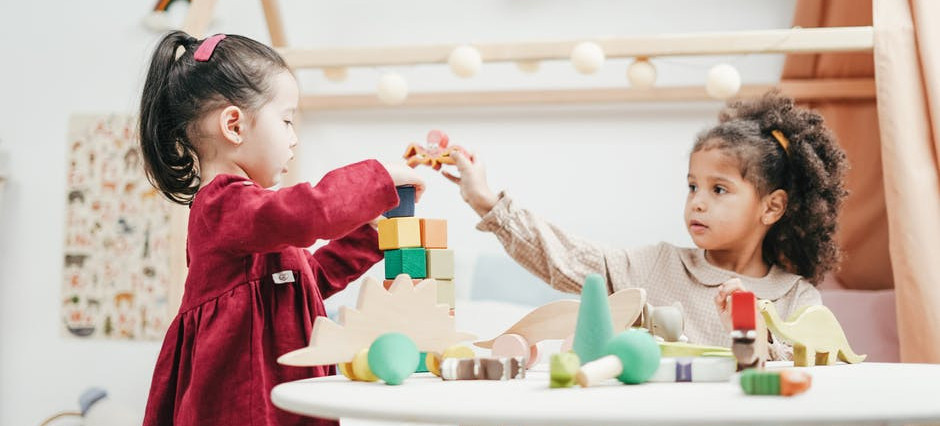Oral language is the system through which we use spoken words to express knowledge, ideas, and feelings. It is comprised up of both receptive language (listening) and expressive language (speaking). Oral language development in young children is the development of the skills and knowledge needed for children to become effective speakers and listeners.
Importance of Oral Language
Oral language and critical listening skills are often overlooked and replaced with reading, writing, and math instruction. When these skills are overlooked, children tend to struggle and take longer to become proficient readers and writers. This is due largely to the fact that the ability to read and write is dependent upon the person’s oral language proficiency. Oral language lays the foundation for reading and writing skills of children as they enter and progress through school. When children have a solid foundation in oral language, it will help them become successful readers and writers.
Children enter school with a wide range of oral language abilities. The oral language ability that they bring with them to school is greatly dependent upon the amount of language exposure they have at home. Some children have been exposed to rich oral language at home while other children have not had the same opportunity for rich oral language at home. These differences lead to a wide gap in oral language ability as children enter school. By providing a strong focus on oral language development in the early years, we are helping close this gap and setting children up for academic success.
A solid foundation in oral language will help children become successful readers, strong communicators as well as increase their overall confidence.

Language-Rich Classroom Environment
A child’s environment plays an important role on how well their oral language skills develops. Children need plenty of opportunities to hear and practice their language skills. An environment that is rich in language will provide children with meaningful opportunities to use and practice the language around them.
Children are more compelled to talk when they are given a reason to talk. Teachers need to provide these talking opportunities by creating an environment that is full of authentic language. The more authentic language in the classroom the more opportunities for children to interact with the language.
Theme based classrooms are one of the best ways to provide opportunities for children to be exposed and re-exposed to new ideas and vocabulary. Themes organize language and literacy experiences around a robust set of ideas for the students to explore. It provides repeated opportunities to develop children’s oral language comprehension, vocabulary and print awareness. A thematic classroom will give children plenty of time to get comfortable and make sense and “own” new words and ideas. It also will provide multiple opportunities to revisit related ideas through book reading, center activities and opportunities to explore real objects.
A language-rich classroom is an invaluable resource that will help teachers foster greater gains in students’ language development, increase their comprehension and build classrooms that are engaging and welcoming to students.
Teachers Role in a Lanugage-Rich Classroom
Teachers play an important role in the oral development of children. Since children learn to listen by being listened to and learn to speak by being spoken to, it is important that teachers are modeling good speaking and listening skills throughout the day. Teachers need to model rich language that includes labeling, describing, comparing, linking, inferring, and explaining. When the teachers model these behaviors, children will emulate these behaviors.
Five tips to remember when planning for oral language activities:
1. Children learn what they hear most. Have repeated exposure to vocabulary, books, and activities throughout the school day to allow children many opportunities to interact with new words and ideas.
2. Children learn words for things and events that interest them. Use cue from children about what they are interested in. When it is a topic of interest, you will get more authentic deep conversations with children.
3. Children learn best when they are engaged and interacting with others. Oral language doesn’t develop by sitting and watching the teacher talk. Oral language develops by children talking and interacting with others. A classroom rich in language will have many meaningful conversations taking place throughout the classroom.
4. Children learn best in meaningful contexts. Children are more compelled to participate and learn from activities have a meaningful purpose. For example: practicing writing their name on a piece of paper has no purpose for the students. But when they have to write their name to sign in to class gives that activity of writing their name a purpose.
5. Children need to hear a wide range of words and language structure. Expose children to different types of words and language structure through read-alouds, songs, poems, rhymes, and finger plays.
Teachers need to plan in advance, think ahead, and set the stage for talk.
Suggested Activities to Promote Oral Language

Read Aloud Every Day: Reading aloud and having discussions about the story increases vocabulary, develops comprehension, promotes discussion, and models fluency.
Child-Let story Retells: When children retell stories, it brings about a broad range of oral language skills that have been modeled by the teacher. Retells give children and opportunity to practice their vocabulary as they tell the story in their own words.
Rich Vocabulary: Children need to be introduced to a wide range of vocabulary. These vocabulary words can come from thematic words as well as words from your read alouds. The vocabulary words should be incorporated into your theme and your learning centers so that children have many opportunities to interact with the words and use the new words in context.
Transitions: Use transitions as an opportunity to expand the children’s talk, reinforce rare words and new vocabulary and encourage children to compare and contrast
Open-Ended questions: Broad open-ended questions are designed to help children think critically and creatively. By using open-ended question, you give children opportunities to think, describe, compare, and use rich vocabulary words.
Labeling: Familiar items (doors, bookshelf, cubbies, glue, pencils) should be clearly labeled with a word and an image.
Name Labels: Children love to see their names throughout the classroom. A child’s name is the most important word to them because they already understand the meaning of the word. Names should be used throughout the classroom in meaningful ways
Writing Centers: Children learn to tell their stories through talk and later take that language into writing. Writing centers give students a chance to explore print and practice their language skill in the form of writing.
Classroom Libraries: Have a comfortable classroom library where children have a place to go to read books of their own choosing. Student created books should also be included in this center. Students will benefit from reading books at their level as well as exploring other texts in their interest areas. Young learners will learn to explore print concepts, picture cues, captions, and directionality.